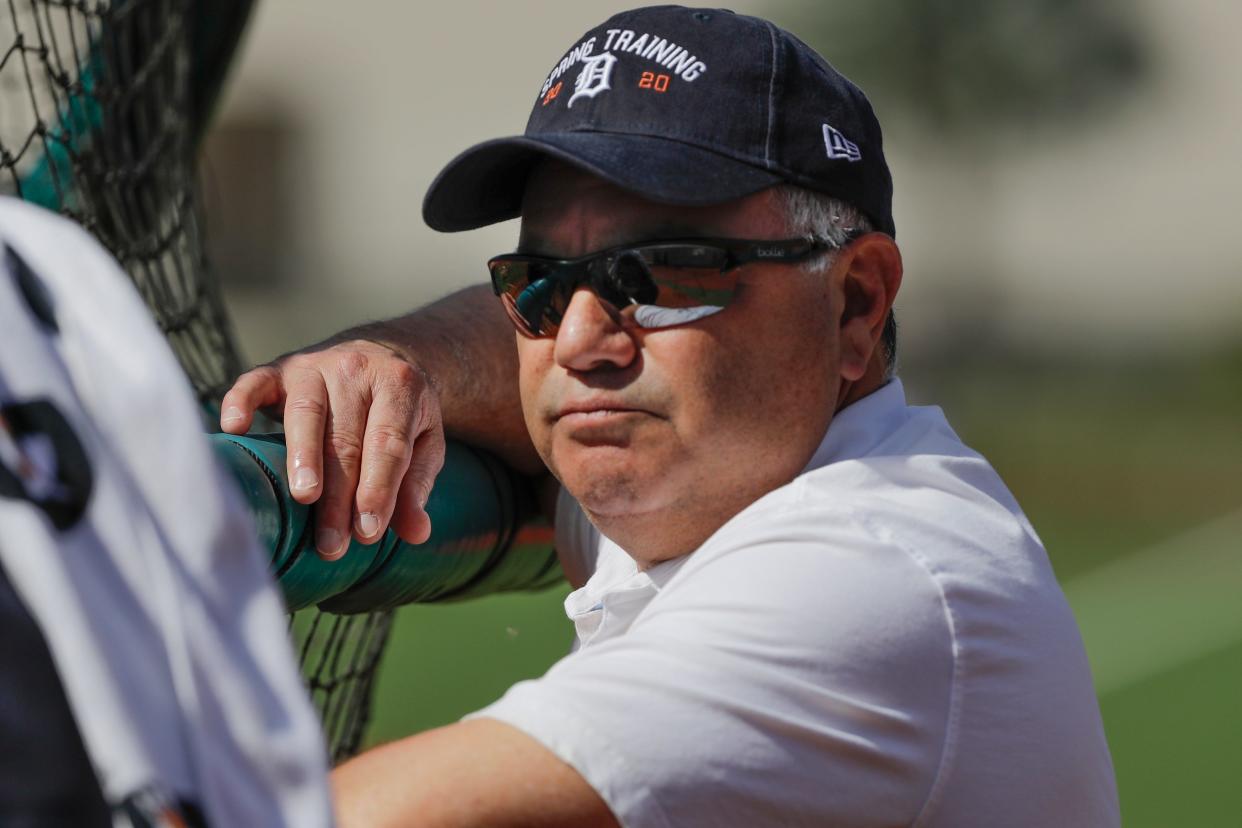SCANLON: GM Al Avila is the fall guy for Tigers' bad 'rebuilding' plan

When Al Avila was fired Wednesday after seven years as general manager of the Detroit Tigers, it wasn't because he had failed to implement the organizational plan. In fact, Avila did carry out the plan. It was just a bad plan.
You may have have noticed that most "rebuilding" projects fail, and even the successful ones take much longer than planned. In the late summer of 2022, that's where the Tigers are.
The whole rebuilding concept has changed dramatically in the era of free agency and trade deadlines, so much so that the very term often elicits cynicism. Rebuilding has come to mean something similar to "tanking."
Scanlon on MLB: Trying to make sense of MLB at the halfway point
Scanlon on Rays' trade: Rays trade made a year ago looks like a win for everyone
Scanlon on Cabrera: Tigers' Cabrera joins an elite club ... will he be the last member?
Major League Baseball's recent trade deadline gave us two examples that illustrate the difference.
Three years after winning the final World Series of the pre-COVID era, the Washington Nationals completed the decimation of their championship roster by trading 23-year-old Juan Soto to San Diego. The Los Angeles Angels decided not to trade reigning AL MVP Shohei Ohtani.
The Nationals and Angels faced deadline pressure to trade their best young players, not because they didn't want them anymore but because they would soon have to pay huge money to keep them. As a business decision, the Nationals could justify their trade as rebuilding. Indeed, many baseball analysts declared the Nationals "winners" of the trade because of the six players (mostly prospects) they got in return for Soto and Josh Bell. We shall see about that.
By contrast, the Angels chose to keep Ohtani, at least for now. Nobody had offered them a package attractive enough to convince the Angels they could rebuild better, or sooner, without one of the best players in the game. In other words, it was a baseball decision. Those are somewhat out of fashion.
The Tigers had everybody fooled his spring, starting with themselves and certainly including me. When they left Lakeland in April, their expectations were lofty, but those expectations were smashed right out of the gate and the Tigers never recovered. Avila became the obvious fall guy.
The lesson that should have been learned is that when an organization determines that its "rebuild" is over and now it's time to start competing again, that doesn't mean it's going to happen right away ... or ever. The concept of rebuilding is based on the illusion that high draft picks will translate into wins, and that principle is dubious at best, especially in baseball.

When Avila moved up from assistant GM to take over the Tigers in 2015, they had a roster that included Miguel Cabrera, Justin Verlander, J.D. Martinez, Victor Martinez, Ian Kinsler, Justin Upton, Francisco Rodrigues, Jordan Zimmermann and Nick Castellanos, all of whom were carrying big, long-term contracts or soon would be. That core of players had a shot at winning the World Series every year. But shortly after Cabrera and Verlander signed record-breaking contracts, the decision was made — at a corporate level — to gut the payroll and rebuild.
Enter Avila to start the process, and exit every high-ticket player except Cabrera. The Tigers dropped to the bottom. Fans were reminded that the Tigers were drafting the best young pitcher available each June, and it would all pay off someday.
Someday has yet to arrive.
Last season the Tigers came back from a bad start to finish in third place under first-year manager A.J. Hinch, and the taste of progress convinced the organization that the rebuilding process had entered a new phase. It was time to spend some money and reward the patient fan base by getting back in the competition.
The bulk of that money was spent on shortstop Javier Baez (six years, $140 million) and pitcher Eduardo Rodriguez (five years, $77 million). Those signings, and the apparent readiness of young starters Casey Mize, Tarik Skubal, Matt Manning and Tyler Alexander and rookies Spencer Torkelson and Riley Greene, gave Detroit a whole new outlook in March. Then, in the final days of spring training, when Avila traded with the Rays for outfielder Austin Meadows, the Tigers went into the season with hopes soaring.
Almost immediately, those hopes were shown to be unrealistic, in no small part because Rodriguez, Baez and Meadows have contributed almost nothing, partly due to injuries. Meadows has yet to hit a home run, Rodriguez has won one game and Baez leads the league in errors.
The Tigers have had more than their share of injuries, to be sure. Of the five starting pitchers who looked so well-tuned in March, only Skubal has started more than eight games.
Maybe next year will be different.
This article originally appeared on The Ledger: SCANLON: GM Al Avila is the fall guy for Tigers' bad 'rebuilding' plan

